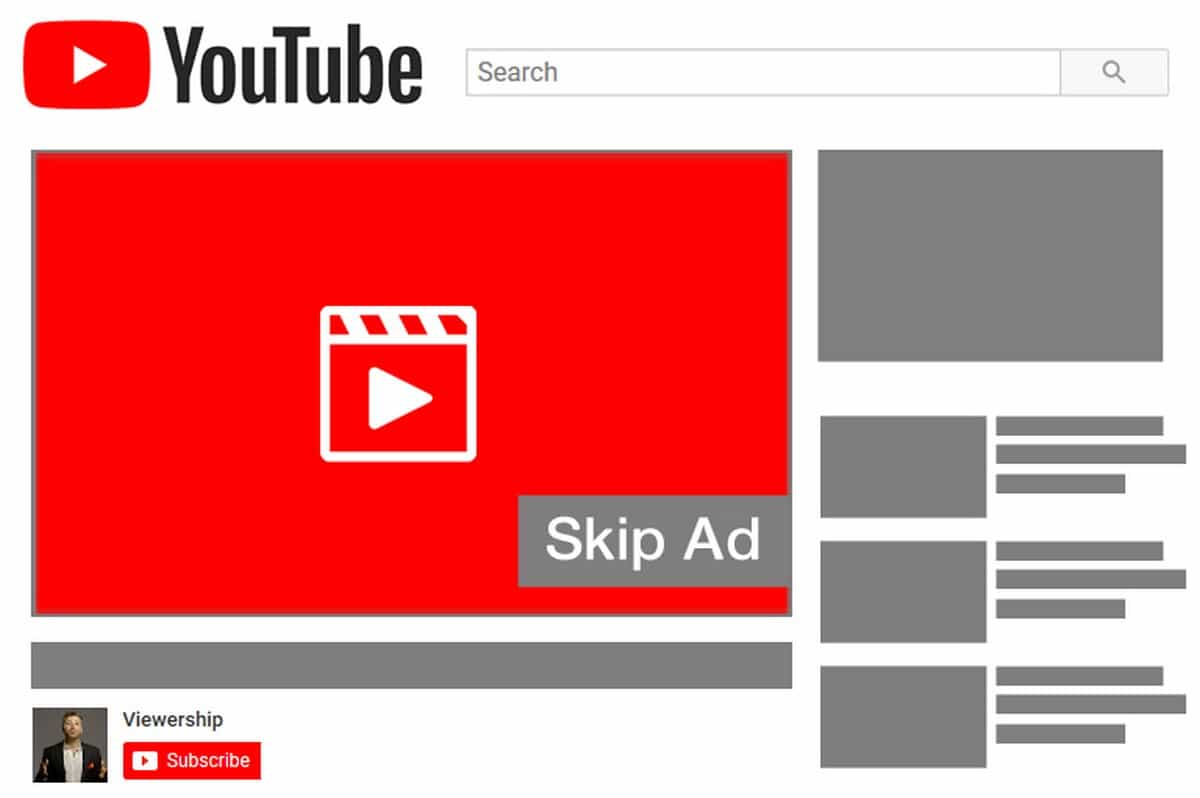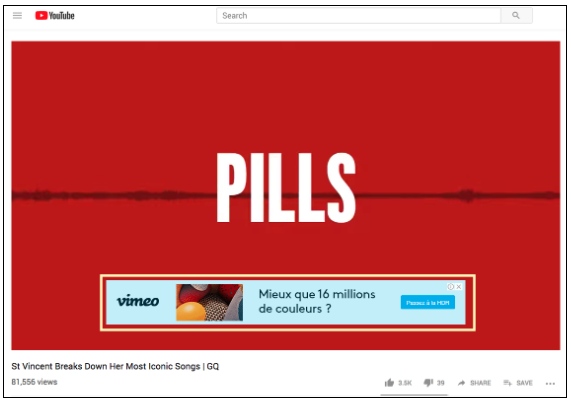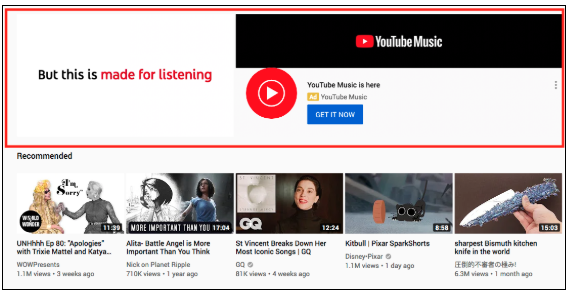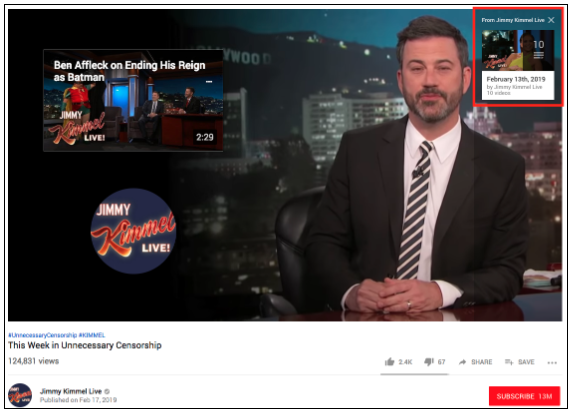Continue reading to know more knowledge about video ads on YouTube.
The way to set up video ads on YouTube
Once you’ve uploaded your ad footage to YouTube, you’ll have to set up a campaign with a targeted audience.
Setting up your campaign
- Click Campaigns on the main toolbar.
- Click the +Campaign button, then New campaign.
- Select Video as your campaign type.
- Establish your campaign goal and subtype.
- Name your campaign.
- Enter your budget.
- Type the locations and networks where you want your ad to appear, as well as the locations and networks you’d like to exclude.
- Enter your target audience’s language.
- Name your ad group.
- Establish your bid amounts.
- Establish your target audience.
Targeting the right audience
Build a YouTube advertising campaign in Google Adwords and take advantage of the interactivity between these two search giants. It’s like killing two birds with one stone: once you’ve built your YouTube video ad campaign in Adwords, you can use insights gained from YouTube to remarket to new audiences within the Display Network.
Here’s the completed list of video ads targeting options on YouTube:
Demographic group
That is the standard suite of demographic filters: age, gender identity, parental status, and household income.
Detailed demographics
Get even more granular by targeting specific audiences within your demographics. Choose from marital status (single/in a relationship/married), home ownership (owner/renter), education (high school/bachelors), and parental status (parent of infants/toddlers/preschoolers/grade schoolers/teenagers).
Interests
Discover the best audience by targeting based on search history and personal interests.
Affinity audiences
This kind of targeting is for companies who advertise their products on TV and want their campaign to have an online presence. It’s similar to interests targeting but casts a wider net. Affinity audiences are groups including people interested in PC gaming, or people who collect stamps.
Custom affinity audiences
This builds on affinity audiences, offering more specific targeting. Instead of people who like cooking, custom affinity audiences might allow you to target people who frequently search for barbecue equipment.
Life events
People’s purchasing habits and brand preferences change once they reach certain milestones, like graduating from college, getting married, or having a baby. Using life event to target your audience allows you to hone in on these important moments and market accordingly.
In-market audiences
Target your YouTube ads to people looking for products like yours. According to ad click history, conversations, search history, and the frequency of people searching specific terms, Google determines whether someone’s “in-market” for a product or service.
Custom intent audiences
Target individuals whose search terms indicate they are on the verge of making a purchase.
Video re-marketing
Target an audience based on a) whether they’ve watched other videos on your channel, and b) which ones they’ve watched. This is particularly useful as you can zero in on parties. More info on retargeting here.
Placement targeting
This means choosing to place your ads on unique channels, videos, apps, websites, or placements within websites (such as YouTube channels, and sites on the Display Network.)
Tip: Keep in mind you can track the performance of your ad placements in AdWords—go through these frequently and remove any low performers to optimize your campaign.
Topics
Target your video ads to reach a range of videos, channels, and sites that are related to topics of your choosing.
Keyword targeting
Target individuals based on their search terms. For instance, in case you sell plant food, you might target people asking Google why their plants aren’t thriving.
Device
Target specifically by screen (desktop/mobile/smart TVs).
Setting your video campaign life
You’re almost completed! Once you’ve zeroed in on the right audience, it’s time to set the campaign live.
- Select the video you’ve published for this YouTube campaign.
- Choose your ad format (In-Stream or Discovery).
- Click Save and Continue.
Congrats! You’re ready with your first TrueView campaign.
Setting up a bumper ads campaign pretty much follows the same steps, only you’ll want to click the “Bumper ads: 6-second video ads” option, rather than In-Stream or Discovery. For full instructions on creating a bumper ads campaign, take a look at Google’s guide.
Non-video ad formats on YouTube
In case you’re not ready to produce your video ads—or want to make your existing video ads interactive—you may advertise on YouTube with overlay ads, display ads, and sponsored cards.
Overlay ads
In case you’re running a reservation sponsorship campaign, you can arrange overlay ads on partner videos.
YouTube overlay ads are banner advertisements that are often shown along the bottom of a video. They can be simple text ads or visual banners.
For information on the way to arrange overlay ads, see Google’s helpful guide.
Display ads
Display ads appear above the video suggestions list. You can use AdWords to manage them. AdWords allow you to double up with the Display Network for maximum reach.
Cards and Sponsored Cards
Cards are small CTA pop-ups you’ll be able to set to appear throughout the YouTube player. Use these to add interactivity to your videos.
YouTube cards are effective because they’re an unobtrusive method to advertise while also driving actions from viewers. Cards only increase to their full size once they’re clicked (i.e., when the viewer is).
The way to add cards to a YouTube video:
- Navigate to the Creator Studio on your YouTube channel.
- Click Video Manager and choose a video to add a card to.
- Select Edit.
- Tap Cards.
- Click Add Card.
- Select the type of card you want: Video or Playlist to promote other content on your channel, or Link to send the viewer to a sales page with a sponsored card.
- Once you’ve created your card, you may choose where and when it appears on the video.
YouTube ad specs
Let’s take a look at a quick rundown of YouTube ad sizes for both video and non-video.
Video ad requirements (TrueView, Non-skippable, and Bumper ads)
- Video Codec:264, MPEG-2, MPEG-4
- Audio Codec: AAC, MP3
- Resolution: 640×360 (19:9 aspect ratio) or 480×360 (4:3 aspect ratio)
- Frame Rate: 30 FPS
- File Size: 1 GB max
For TrueView ads appearing in YouTube’s search results and the Display Network, you can also select from four auto-generated thumbnail previews.
Overlay ad dimensions and specs
Overlay ads have one required image which will be shown over the lower 20 percent of a video. In case that you pick an animated image file, keep the animation loop under 10 seconds.
- YouTube Ad Dimensions: 480 px by 70 px
- Ad image type: PNG, JPG, GIF (static or animated)
- Ad image size: 150 KB max
Display ad specs
You may include animated GIFs in your display ads, but the animation loop must be 30 seconds or under. If your creative has a black or white background (even partially), it will require a visible border highlighting the ad’s clickable area.
- YouTube Ad Dimensions: 300 px by 250 px
- Ad image type: PNG, JPG, GIF
- Ad image size: 150 KB max
Sponsored cards dimensions and specs
With sponsored cards, you need to pick an image that displays your product. Write a convincing CTA to accompany it.
- YouTube Ad Dimensions: variable (1:1 aspect ratio)
- Ad image type: PNG, JPG, GIF (can be animated)
- Ad image size: 2MB max
Apart from these technical requirements, YouTube has a list of rules and regulations around what kinds of content they’ll enable on the platform. Keep these top of mind once you’re concepting your ads.




